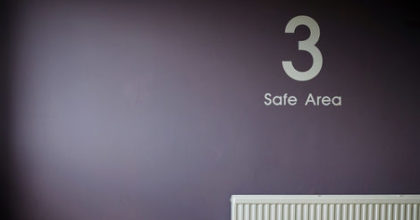
 )
)Want to hear about science communication from the science editor of Christianity Today, a public radio producer, and me? Details at the end.
The old saw about real estate says that the most important features are location, location, location. Mathematicians care about location too, such as the location of the prime numbers. Prime numbers, divisible only by themselves and 1, have several uses, most popularly in the encryption that guards our Internet transactions. Consequently, we are always on the lookout for new ones, which is a challenge because they don’t follow a simple pattern. We don’t know an algebra equation we can solve or plug-n-chug to produce them all. They are irregularly spaced; if you ‘walked’ the number line to find one, you might go a thousand numbers without finding one, then find two separated by just one other number. Finding new prime numbers can be newsworthy, especially when you find the biggest prime number yet.
The newly discovered prime has over 23 million digits. To appreciate how long that is, this video of the first million digits of pi takes over 22 minutes to page through those numbers, and even then at a rate far too fast to read. A comparable video for the current biggest known prime would take about 8 hours. Fortunately, the number is a Mersenne prime and so can be written much more compactly as 277,232,917‑1. In general, Mersenne primes have the form 2p‑1 where p is itself a prime number. But not all prime numbers yield a Mersenne prime when plugged into that formula; candidates provided by the formula must still be checked for being prime which involves systematically checking whether it can be divided by every potential factor. Thus identifying and verifying a Mersenne prime, especially one so big, is a notable achievement.
Besides finding the math interesting, I brought up this story for another reason. Although I had heard of Mersenne primes before, I had never previously bothered to find out who Mersenne is or was. As it happens, Mersenne primes are named for 17th century French scholar Marin Mersenne who was also an ordained priest. His namesake numbers might be his most currently well-known result, but he made contributions in several fields other than mathematics, which may not have even been his primary concern. He was interested in philosophy and theology and was apparently an ardent critic of various magical practices and teachings. If the study of science reveals regularities of nature created or provided by God, and magic is a circumvention of those regularities, then magic is at odds with the revelation of God through his creation.
I also found the quote about Mersenne at the bottom of this brief bio to be interesting. Mersenne was a contemporary of Galileo and also interested in the heliocentric Copernican model of the solar system. What the excerpt from W L Hine notes is that the popular narrative about the Catholic Church being hostile to heliocentric models and those who studied them doesn’t fit with Mersenne’s story. Mersenne was able to maintain his priesthood and study Copernicus without censure.
Finally, Mersenne was apparently at the center of much scholastic activity in Western Europe. He was in regular contact with notables such as René Descartes, Blaise Pascal, Pierre de Fermat, Thomas Hobbes, and Galileo Galilei himself. In other words, he was a central node in the emerging scholars network of his day. And according to some clicking around on the Mathematics Genealogy Project, his network connects to modern day Christians in mathematics like John Lennox and Francis Su (and if I fudge a little bit, yours truly — I’m not in the genealogy database myself because my thesis was in biology, but one of my thesis committee members is). While Mersenne primes are a study in rarity and isolation, Mersenne himself left quite the legacy of connections.
Hear from a Christianity Today editor, a public radio producer, and ESN’s regular science columnist on translating your academic knowledge of science to a wider audience. Our panelists are experts in translating graduate level science training to effective general science communications, career path options for scientists interested in public communication, and becoming a public science communicator and scholar. With experience ranging from print media to radio to blogging, they will share their knowledge in a one hour online session. Panelists are Rebecca Randall (Christianity Today), Christine Herman (Illinois Public Radio), and Andrew Walsh (ESN’s weekly scientist columnist, and author of a forthcoming book with Hendrickson Publishers). The event will take place via Zoom videocall on January 17 (2018) at 7:30 pm Eastern Standard Time.
Sign up here to receive an invitation to the Zoom session: http://bit.ly/PublicScienceJan2018
Andy has worn many hats in his life. He knows this is a dreadfully clichéd notion, but since it is also literally true he uses it anyway. Among his current metaphorical hats: husband of one wife, father of two teenagers, reader of science fiction and science fact, enthusiast of contemporary symphonic music, and chief science officer. Previous metaphorical hats include: comp bio postdoc, molecular biology grad student, InterVarsity chapter president (that one came with a literal hat), music store clerk, house painter, and mosquito trapper. Among his more unique literal hats: British bobby, captain’s hats (of varying levels of authenticity) of several specific vessels, a deerstalker from 221B Baker St, and a railroad engineer’s cap. His monthly Science in Review is drawn from his weekly Science Corner posts — Wednesdays, 8am (Eastern) on the Emerging Scholars Network Blog. His book Faith across the Multiverse is available from Hendrickson.

Leave a Reply